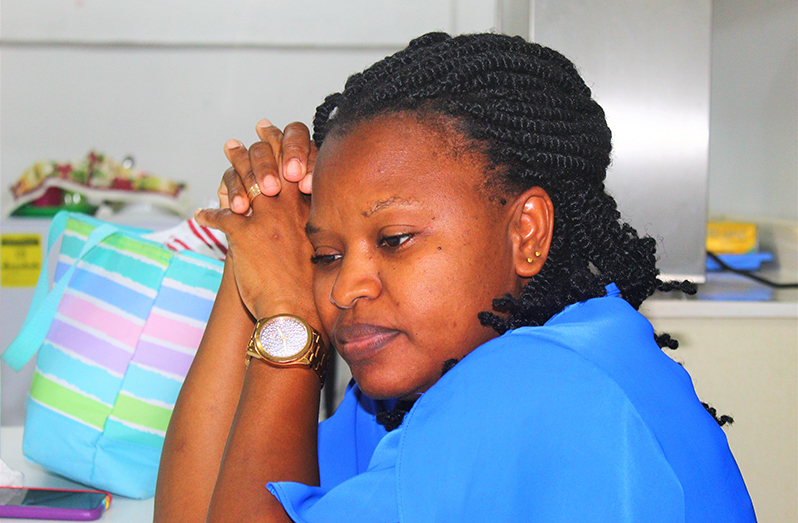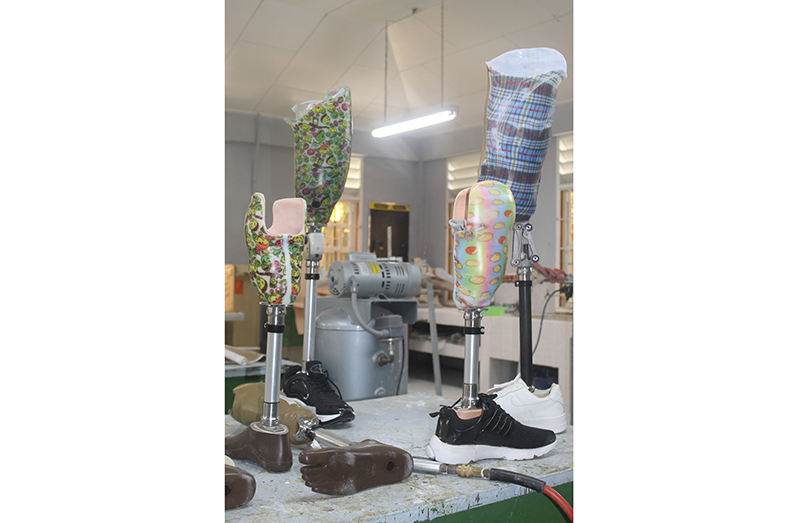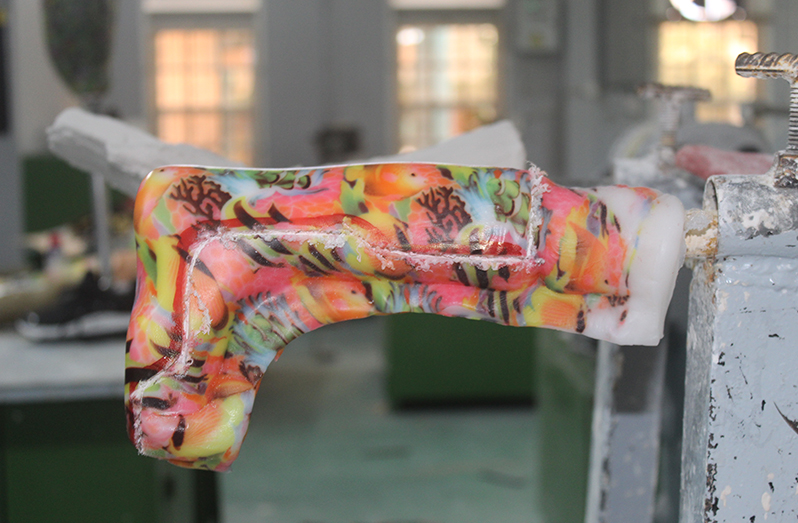Working to restore a better quality of life
By Shaniya Harding
Whether due to an accident or illness, it’s always hard moving forward when someone has lost part of themselves. Everywhere, there are persons who have lost arms, legs and certain senses, such as the ability to hear. And these are the cases that Collin Charles and Alesha Richmon deal with.
In Carmichael Street, in the heart of our nation’s capital, is an institution dedicated to helping others. The J.E Simmons Orthodontic and Prosthetic Appliance Workshop is more than what it appears to be. Located behind the Ptolemy Reid Rehabilitation Center, they specialise in far more than the name suggests. Apart from orthodontics and prosthetics, they also have an audiology department.

The Pepperpot magazine sat down with Collin Charles, Head of the Orthodontic and Prosthetic division at J.E Simmons. Collin stated that a common misconception is that prosthetics and orthodontics are the same thing. But the Senior Prosthetic Technician, explained, “Orthodontics is a device which is used to support the body; it also helps to stop involuntary movement. And in children, it helps to correct deformities. Prosthetics, however, is a science which deals with the replacement of a missing body part.”
He also went on to explain what it is that his department does, saying, “We manufacture and fit prosthetics. We do our clinical assessment of the patient. We work along with the physical therapy department to assess the patients. And once the patient meets the requirements for a prosthesis, we go ahead.” Similarly, Head of the Audiology Department, Alesha Richmon, explained how a hearing aid works, saying, “Hearing aids are sound amplifiers. They make sounds louder. The hearing aids we have are digital, which means that they can be programmed specifically to the patient’s hearing loss. To fit the hearing aid, we need an ear mould. And that is something that has to be custom-made.”
Moulds, cast and measurements
In walking us through exactly how a prosthetic is made, Collin stated simply, “It is a process. Let’s say an amputee comes in. We do our clinical rotation by examining the patient. Making sure they are in the correct shape and strong enough to manage a prosthesis. Once that is done, we proceed to take an impression along with measurements. Then we follow that negative cast which is the impression to create a positive mould. Where we do our modification using the measurements taken from the patient. Then we proceed to create the socket which will now be fitted to the patient.”

Moving on to the Audiology department, the same amount of care and attention to detail is paid in the production of ear moulds. “This is a repair mold lab. However, we are currently doing a hearing test here as well. We are an extension of the audiology department at the Georgetown Public Hospital. It’s a walk-in clinic because we only started in March of this year. But at GPHC, that is a referral clinic, but here you just walk in and make an appointment,” Alesha explained.
For a hearing test, there are a number of aspects that are determined based on the patient. Similarly in Prosthetics and Orthodontics measurements are taken, a mold is made, and then several stages of moulding are done to acquire a finished product. And after a series of fittings, a person can have a leg replaced and their sense of hearing restored. In some cases, the person does not come with a person who does not come with a prescription.
Perhaps the most intricate part of this process is the fact that every patient is different with different needs. “For an amputee, we know exactly what is needed for that person who has the amputation. If I were to work on one patient it would take about five days. But because we have so many patients coming in it tends to take a little longer,” Collin explained.
One thing that sparked the interest of many people is the so-called ‘Bionic’ arms and legs. And although many may assume that they are not made in Guyana, Collin emphasises that they are. A myoelectrical, as it is called, refers to the electronic properties of the muscles. And although we have only had a few done to date, Collin says that there is potential to have more done in Guyana. “It is basically the same procedure. But it’s a little more complex because we have to do testing. Where you use an instrument to test for pulp. Because the deals with a battery sensation along with pulps to be able to give that person control to open and move their hand,” he explained.

Both Alesha and Collin have been in their respective field for more than 20 years. In Collin’s case he says his most memorable cases are the most challenging ones. “The most memorable to me are those who have lost both legs, a bilateral amputation – to get those people to walk again; to see them stand up and walk is the biggest motivation,” he explained. And as much as advances have been made there is still a long way to go in more facilities like these and how persons perceive those with an amputation. As Collin shared, “Some people are more into cosmetics. They have this stigma because they don’t want anyone to know they don’t have a leg. And they feel like people are stigmatising them, knowing that they have an amputation. So generally pepe ar into cosmetic function.”
Working for the greater good.
One of the amazing things about the J.E Simmons Workshop is that it is a non-profit organisation. Meaning that the only cost paid is for the materials used to make a prosthetic. There is cost recovery for the imported material used.
In the case of the audiology department, the only thing made is the mould, whereas the hearing aids themselves are bought by the government of Guyana. Alesha went on to explain that, “We do hearing testing, so anyone with a hearing problem can come and have their hearing test done and once that cannot be rectified by a surgery or medication, then we rehabilitate in the form of hearing aids. Those hearing aids are provided no free of cost by the ministry of health. Previously they would have to have been purchased but now they are free.”
Places like this do far more than help people. As you walk through the walls of the workshop, you are met with an assortment of legs, feet and hearing aids that are all custom-made and will restore someone’s confidence, self-image and possibly their life.



.jpg)








